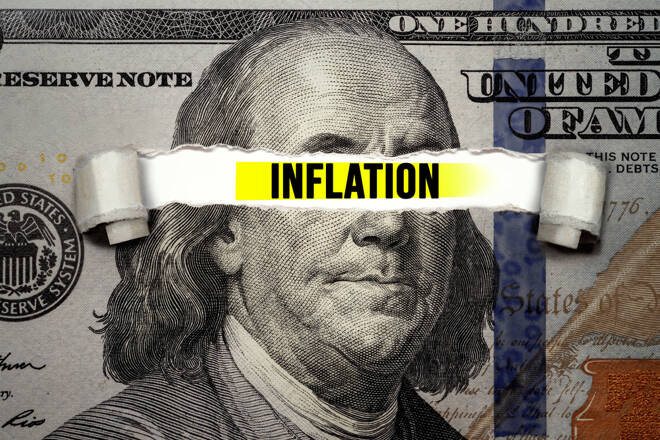Advertisement
Advertisement
US CPI Data in the Spotlight: What You Need to Know
By:
Upcoming CPI data will be in the spotlight as markets assess the outlook for Fed tightening in the coming quarters.
Key Points
- Headline US CPI is seen falling back from August’s levels on both a MoM and YoY basis.
- However, Core CPI is seen unchanged MoM and rising YoY.
- Unless there is a massive deviation from expectations, the Fed is expected to largely look through Tuesday’s report.
Headline Inflation Expected to Ease, Core Seen Unchanged
Tuesday’s US Consumer Price Index (CPI) report, set for release at 1230GMT, is expected to show the pace of headline inflation slipping to -0.1% MoM and 8.1% YoY in August, following July’s 0.0% MoM and 8.5% YoY figures. A further sharp decline in US gasoline prices last month is expected to be the main driver behind the drop in the headline US inflation rate.
Optimism about how Tuesday’s data is likely to strengthen the view that US inflation has now peaked was attributed as being a partial driver behind Monday’s sharp upside in US equity markets, analysts said at the time, as well as behind some of the US dollar’s recent losses.
However, the core metrics of the upcoming CPI report are not expected to show any easing of price pressures, which may contribute to worries that, while the headline YoY rate of inflation may continue to swiftly fall back from its recent highs above 9.0%, getting it back below, say, 4.0% will be more challenging.
The rate of Core CPI is seen rising slightly to 6.1% YoY from 5.9% in July, while the MoM rate of core price gains is seen remaining unchanged at 0.3%.
Fed Likely to Look Through Tuesday’s CPI Report
Most analysts agree that Tuesday’s CPI report, unless there is a big deviation from expectations either to the upside or downside, shouldn’t have too much impact on the Fed’s near-term policymaking decisions.
Policymakers at the bank have made it abundantly clear in recent weeks that tackling inflation is their number one priority and that, to do that, interest rates will need to move into contractionary territory for some time (i.e. into the 3-4% area for at least until the end of 2023).
In light of recent US economic data which has shown that 1) the US labor market remains historically strong and 2) the economy continues to grow (as per recent ISM survey data), markets are near certain that the Fed will deliver a 75 bps rate hike at next week’s meeting.
Some analysts think a massive downside surprise in core inflation could bring the discussion of a 50 bps rate hike back onto the table. But Fed policymakers have in recent months been keen to play down the importance of any one economic data release in their decision-making, stating that they instead prefer to observe trends.
With a few FOMC policymakers having already openly endorsed a 75 bps move next week, the bar for a smaller than 75 bps rate hike is high.
How Markets Might React
The breakdown of the CPI report could still have significant ramifications for the market’s expectations for longer-term Fed policy. Various Fed policymakers have been expressing worries about the persistence of “stickier” forms of inflation, such as rising rental costs and service costs.
As far as financial markets are concerned, if the report comes in largely as expected, Fed tightening expectations are likely to remain largely intact as they are right now – the Fed is seen lifting rates to around 4.0% by next March before lowering them to around 3.65% by next December.
That, given that it may contribute to hopes about inflation and Fed hawkishness both having peaked, could come as a relief to risk assets, with stocks and crypto likely to perform the best in this scenario while the US dollar potentially comes under renewed pressure.
A big downside surprise could see Fed tightening bets pared back somewhat, which would likely result in an even more exaggerated version of the above moves.
A big upside surprise, particularly if it in the core measures of inflation which Fed policymakers are likely watching more closely, could see the opposite happen – an uptick in Fed tightening bets and weakness in the likes of stocks and crypto combined with USD strength.
About the Author
Joel Frankauthor
Joel Frank is an economics graduate from the University of Birmingham and has worked as a full-time financial market analyst since 2018. Joel specialises in the coverage of FX, equity, bond, commodity and crypto markets from both a fundamental and technical perspective.
Advertisement
